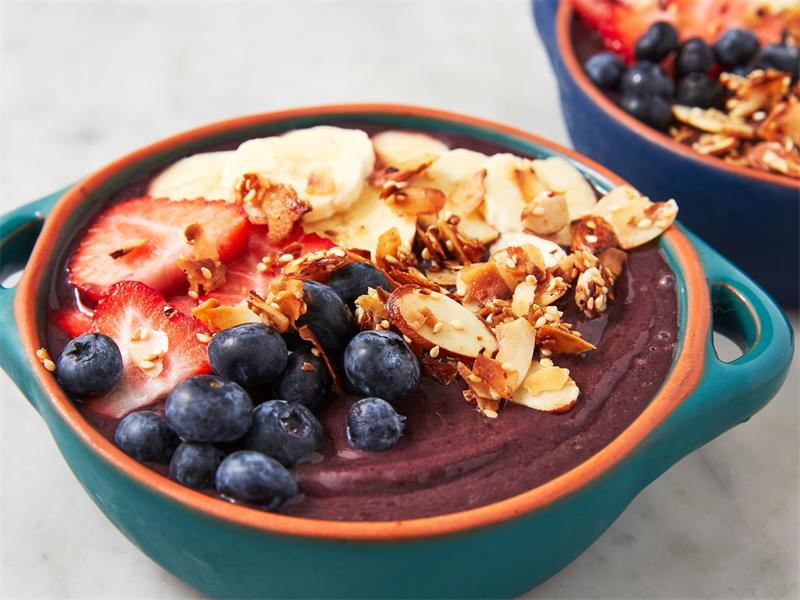Contents
The Power of Kickboxing: Benefits of Exercise and Self-Defense
Are you looking for a new way to shake up your workout routine? Or maybe you’re interested in learning practical self-defense techniques?
Either way, kickboxing might be just what you’re looking for! Kickboxing is a high-energy form of exercise that combines martial arts techniques with cardio elements.
It’s a full-body workout that engages your muscles, elevates your heart rate, and challenges your coordination. And the best part?
It’s also an effective form of self-defense that can help boost your confidence and preparedness for any situation. But the benefits of kickboxing go beyond just physical fitness and self-defense.
Studies show that regular kickboxing workouts can have mental health benefits as well. For example, it can be an incredible stress reliever and mood-booster.
After all, throwing punches and kicks at a punching bag can be incredibly cathartic after a long day! Additionally, learning new skills like self-defense can help increase confidence levels, which can positively impact other areas of life as well.
So whether you’re looking to get in shape, learn valuable self-defense skills, or simply boost your overall well-being, kickboxing might be exactly what you need! In the following sections, we’ll dive deeper into the physical and mental benefits of this fun and exciting form of exercise/self-defense.
The Physical Benefits of Kickboxing
Kick Your Heart into Shape
Kickboxing is a great way to boost your cardiovascular health. By incorporating high-intensity movements, such as jumping jacks and kicks, into your routine, you can elevate your heart rate and increase blood flow.
This can help improve your overall cardiovascular endurance, making everyday activities feel easier. Plus, the endorphins released during exercise can give you a natural high that makes you want to keep coming back for more.
Strength and Endurance Training in One
Kickboxing is a full-body workout that targets multiple muscle groups at once. By practicing kicks and punches, you can build strength in your arms, legs, core and back muscles.
Additionally, the dynamic movements of kickboxing are great for improving endurance. By repeating these movements over time, you will develop the stamina needed to keep going through even the toughest workouts.
Lose Weight with Kickboxing
In addition to benefiting your heart health and strength training goals, kickboxing can also be an effective form of weight loss exercise. Studies have shown that high-intensity workouts like kickboxing burn calories faster than low-intensity workouts like walking or yoga.
Additionally, kickboxing requires constant movement which helps prevent boredom or plateauing due to repetitive movements. When it comes to the physical benefits of kickboxing expect improved cardiovascular health through higher intensity movement such as jumping jacks and kicks.
Practicing kicks and punches while performing whole-body workouts improves the overall strength in arms legs core and back muscles leading up to better endurance levels which lead up to even tougher workouts with ease! It’s also great for losing weight with constant motion helping prevent boredom or plateauing due to repetitive movement within lower-intensity exercises such as walking or yoga.
The Mental Benefits of Kickboxing
Kickboxing is not just a great way to get in shape physically, it also has numerous mental benefits. As we engage our bodies and focus on the techniques and movements of the sport, we may find ourselves experiencing a sense of relief from stress, anxiety, and even depression.
One of the reasons kickboxing can be a stress reliever is that it allows us to release pent-up tension in a healthy and productive way. As we hit the heavy bag or pads during training sessions, we are able to channel any negative emotions into physical energy.
This can leave us feeling more relaxed and clear-headed after workouts. Furthermore, taking up kickboxing can boost our mood significantly because of the endorphins that are released during exercise.
These chemicals interact with receptors in our brain to reduce pain and produce feelings of euphoria or well-being. So not only are we getting stronger physically through kickboxing, but also mentally!
Increased Confidence Through Self-Defense Training
Another mental benefit of kickboxing comes from the self-defense aspect of the sport. As we learn new techniques for striking an opponent or defending ourselves against an attack, we may feel more confident in our ability to protect ourselves if ever faced with a dangerous situation. This increase in confidence can also carry over into other aspects of our lives outside of training sessions.
We may find ourselves speaking up more at work or school, setting boundaries with others more effectively, or simply feeling better equipped to handle high-pressure situations. In addition to increased confidence, learning self-defense through kickboxing training can also boost our self-esteem.
Knowing that we have worked hard to develop new skills and abilities gives us a sense of pride and accomplishment that carries over into other areas of life as well. So don’t be surprised if you start feeling like a total badass after just a few weeks of training!
How to Get Started with Kickboxing
If you’re interested in kickboxing, the first step is to research local gyms or studios that offer kickboxing classes. Look for a place that has experienced instructors and a good reputation. You may also want to read reviews from other students and check out their social media pages for information about their classes and schedules.
Once you’ve found a gym or studio that offers kickboxing, it’s important to consider purchasing necessary equipment, such as gloves or hand wraps. Most places will provide boxing gloves, but it’s always better to have your own pair.
Hand wraps are also necessary to protect your hands during training. Before you jump into kickboxing, it’s important to understand the importance of proper warm-up and cool-down routines.
Warm-up exercises help prepare your body for the physical demands of kickboxing while reducing the risk of injury. A good warm-up should include stretching exercises, cardiovascular exercises like jumping jacks or jogging in place, and some light shadow boxing.
Cool-down exercises help your body recover after an intense workout by gradually reducing your heart rate and stretching out sore muscles. A good cool-down should include some easy cardio exercises (like walking) followed by static stretches that focus on the muscles you used during training.
Research local gyms or studios that offer kickboxing classes
The first thing you need to do when starting out with kickboxing is research local gyms or studios that offer these types of classes. Gyms can vary greatly in terms of what they offer so take some time beforehand exploring options online before picking one. Some gyms might have more experienced instructors than others so make sure you choose a reputable place where others have enjoyed their experiences as well.
Consider purchasing necessary equipment, such as gloves or hand wraps
One of the most important things to keep in mind when starting out with kickboxing is investing in proper equipment. While it might cost you a bit more initially, investing in your own pair of gloves and hand wraps is essential so that you can train properly. Besides, it’s much more hygienic to have your own gloves which prevents the spread of germs.
Highlight the importance of proper warm-up and cool-down routines
Kickboxing requires you to use a lot of energy and puts strain on your body which makes it important to take time before class to warm up. Proper warm-up exercises help prepare your body for the physical demands of training while reducing the risk of injury. Make sure you also take time afterwards to cool down by stretching out sore muscles which will help your body recover faster so that you can get back into training sooner!
Tips for Beginners
Starting Slow and Gradually Building Up Intensity
If you’re new to kickboxing, it’s important to start slow and gradually increase the intensity of your workouts. Jumping into a high-intensity class or trying to keep up with the more experienced students can lead to injury and burnout.
Instead, focus on perfecting your form and getting comfortable with the basic moves before moving on to more advanced techniques. One way to ease into kickboxing is by starting with a beginner’s class or working one-on-one with a trainer.
This will allow you to learn proper technique and build up your strength and endurance gradually. As you become more comfortable, you can start increasing the intensity by adding in faster punches or kicks, heavier weights, or longer workout sessions.
Listening To Your Body And Taking Breaks When Needed
Kickboxing can be an intense workout that requires a lot of energy and effort. It’s important to listen to your body during each workout and take breaks when needed.
Overexerting yourself can lead to muscle strain, fatigue, or even injury. If you’re feeling tired or out of breath during a kickboxing workout, take a break and catch your breath before jumping back in.
Similarly, if you feel any pain or discomfort during an exercise, stop immediately and consult with a trainer or doctor if necessary. Remember that taking breaks doesn’t mean giving up – it just means taking care of yourself so that you can continue working out safely.
Finding A Workout Buddy Or Joining A Group Class For Added Motivation
Kickboxing is always more fun when you have someone else doing it with you! Consider finding a workout buddy who shares your interest in kickboxing – this could be a friend, family member, coworker, or someone from your local gym. Alternatively, consider joining a group class at your gym or local martial arts studio.
Group classes provide a built-in support system and can be a great source of motivation and encouragement. Plus, you’ll get to meet new people who share your passion for kickboxing!
Conclusion
Overall, kickboxing is an excellent way to improve your physical and mental health. By engaging in regular kickboxing workouts, you can enhance your cardiovascular health, build strength and endurance, and potentially lose weight.
Additionally, kickboxing can be a stress reliever and mood-booster, while also increasing confidence through self-defense techniques. If you are new to kickboxing or exercise in general, don’t be intimidated!
Start by researching local gyms or studios that offer beginner-friendly classes. Consider purchasing necessary equipment such as gloves or hand wraps to ensure proper protection during workouts.
Remember to always warm up before beginning any workout routine and cool down/stretch afterwards. Whether you’re looking to get in better shape or simply want to try something new, kickboxing can offer many benefits for both the body and mind.
So why not give it a try? Who knows – you just might discover a new passion!













